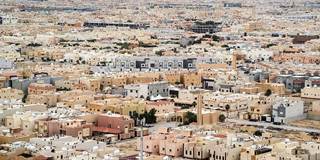A decade ago, Middle Eastern sovereign wealth funds burst onto the global financial scene, raising eyebrows as they gobbled up assets in Europe and North America. But the world in which SWFs invest has changed, and they must change with it.
DUBAI – A decade ago, sovereign wealth funds (SWFs) from the Middle East and North Africa (MENA) were the behemoths arriving on the global financial scene. Funds like the Qatar Investment Authority (QIA) grabbed headlines as they gobbled up assets – including listed securities, private companies, and real estate – primarily in Europe and North America. But the world in which SWFs invest has changed, and they must change with it.

DUBAI – A decade ago, sovereign wealth funds (SWFs) from the Middle East and North Africa (MENA) were the behemoths arriving on the global financial scene. Funds like the Qatar Investment Authority (QIA) grabbed headlines as they gobbled up assets – including listed securities, private companies, and real estate – primarily in Europe and North America. But the world in which SWFs invest has changed, and they must change with it.